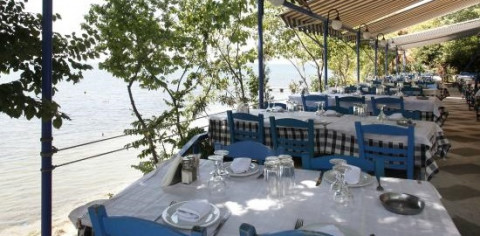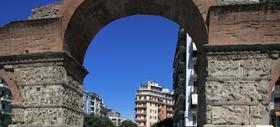Due to its rich history and cultural diversity, Northern Greece has always been a mosaic of different regions around Eurasia. Its cuisine certainly reflects this unique amalgamation of cultures, offering a cornucopia of different tastes. As you travel through the region, you will discover Anatolian flavors in Thrace, love of fish around the Thermaic Gulf, Armenian influences in Central Macedonia and traditionally mainland recipes dominating the West. A true festival of flavors awaiting to be explored! Here is a small taste of what you can expect as we take you on a culinary journey to Northern Greece.
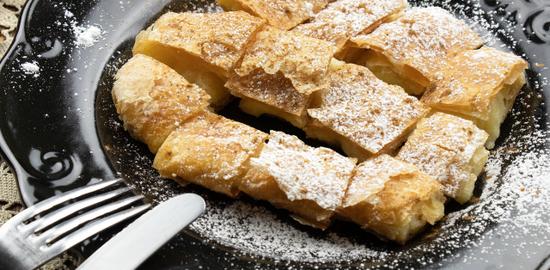

Sweet Bougatsa
It may be unconventional to start with something sweet, but Bougatsa is not your traditional dessert. Quintessentially Macedonian, nothing says 'Thessaloniki' more than this twist on custard pie. Usually eaten for breakfast, Bougatsa rapidly became a favorite treat in Northern Greece and gradually seeped its way to the rest of the nation. Today it can be found in most bakeries around the country, that is if you arrive at one early enough before it is sold out.
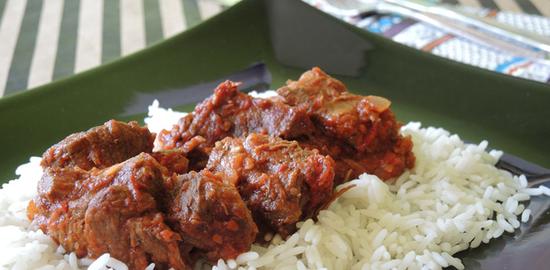
Tas Kebap
From the depths of Anatolia, comes a dish that through the centuries evolved to meet the Mediterranean spice palette. Tas Kebap is a stew originating in Iran and Turkey, but as it migrated to Thrace and subsequently all of Macedonia, it suffered alterations that now render it very different than the original version. In its Greek version, it is chopped veal cooked in low fire with a tomato based sauce and spices that include cloves and bay leaves and is always served with rice. Try it to experience the merging of two cuisines in one!
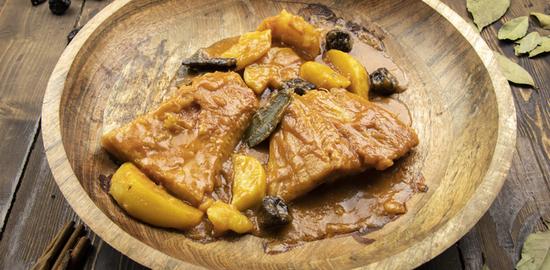
Agioritikos Bakaliaros
A recipe coming straight out of Agion Oros, the 'Holy Mountain' in the Mount Athos peninsula, which is home to 20 monasteries and is solely occupied by monks. Since they don't eat meat, when the monks are not fasting, one of their favorite meals comes in this salted cod dish. Served with a hefty amount of prunes and a lemon based sauce, Agioritikos Bakaliaros is a healthy and light option for lunch.
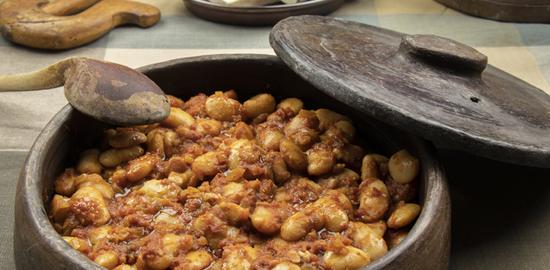

Fasoulotavas
A vegetarian dish popular around Macedonia, Fasoulotravas is made with giant dried beans called gigantes and features a spiciness uncharacteristic to Greek cuisine. In Northern Greece it is prepared with carrots, celery, garlic and of course spicy peppers to give the baked meal its distinct flavor. Prepared in villages in the mountainous regions of Macedonia, your best chance of finding it would be a very traditional tavern.
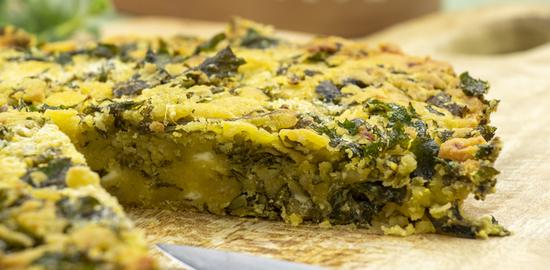

Pispilita Pie
If there is one type of food that is never missing from a typical Greek meal, it is pies. Every region in Greece has numerous recipes of its own, utilizing a variety of meats and vegetables to give a unique flavor that accompanies a meal. Pispilita is a rustic pie that comes from North Thessaly. Unlike most Greek pies, it is not phyllo-based, but instead has a cornmeal crust and is filled with various types of seasonal greens. That gives Pispilita an added element of surprise, as depending on the time of year you try it, it might be vastly different than what you expected!
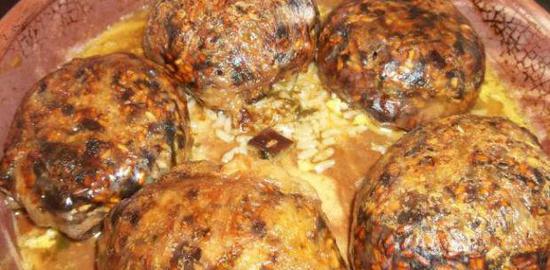
Tzigerosarmades
These aromatic rice balls with lamb, pine nuts and raisins are a must if you find yourself in Thrace. This unexpectedly delicious combination of vastly different ingredients was invented, according to legend, by the shepherds of the region to utilize the scarce resources available to them. Tzigerosarmades are wrapped with lamb or goat membrane and topped with dill. We know how it sounds, but trust us...if you try it, you are not going to regret it.
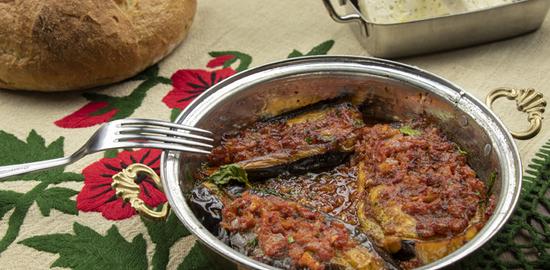

Imam Bayildi
Perhaps the most beloved oriental dish in Greece. It reached the mainland from the Greek refugees in Smyrna and other coastal cities in what is now Turkey during the early 20th century. Made with stuffed eggplants, tomatoes and Gruyère cheese from the Aegean islands, Imam Bayildi gives you a perfect chance to taste the unique blend of fresh Mediterranean ingredients and spices prepared in an Anatolian fashion.
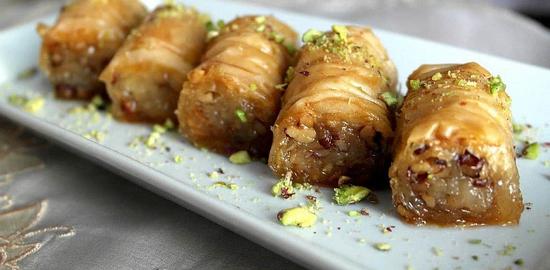

Saragli
Originating in Istanbul and brought over to the mainland by Greek refugees, saragli is a typical syrup based dessert, very similar to baklava rolled in phyllo instead of layered. Easier to eat since it is bite-sized and topped with crushed nuts from Aegina, saragli is a heavy dessert, but one that ideally accompanies most meat-based meals.
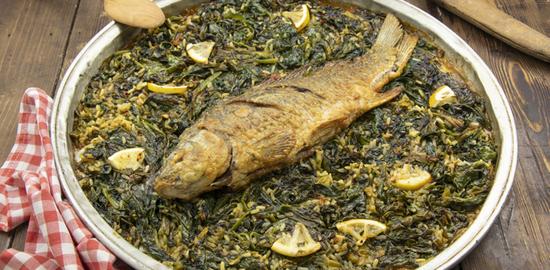
Grivadi with Spinach
Carp is a big deal in the Thermaic Gulf. Grilled, fried or baked, it always seems to find its way to the family tables of the region. This variation of carp, or grivadi, as it is known to locals, is baked with spinach, a favorite green in all of Greece. You can find it in most fish taverns in the coast of Northern Greece. It is recommended to try it with plenty of lemon and freshly ground pepper.

Pie with Pastrami
In 1915, a black page in history was written with the Armenian Genocide in Turkey. As a result, thousands of refugees fled to Northern Greece and have created enduring communities ever since. With them, they brought traditional recipes from their home country, which evolved and took on new forms as they blended with Greek cuisine. Thus, pastrami pie was born. Wrapped in Greek phyllo and stuffed with pastrami and vegetables, this hors d'oeuvre is usually served with honey and sesame seeds on top, to create a delightful mixture of salty and sweet!
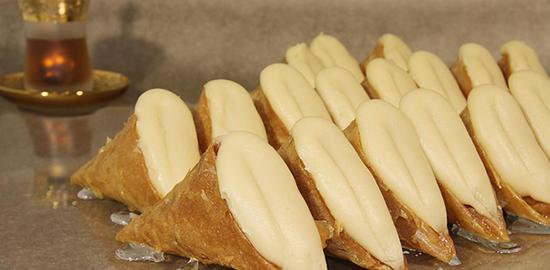

Panorama Triangles
We started with a dessert, so we might as well end with one! Named after the well known suburb in Thessaloniki, these delightful little triangles are soaked in syrup and filled with custard or whipped cream. Found in every pastry shop in the wider region, Panorama Triangles are the most common gift when visiting someone's home for the first time. Especially popular among children due to their subtle flavor and easy preparation, they have become the staple of Northern Greece when it comes to desserts.

